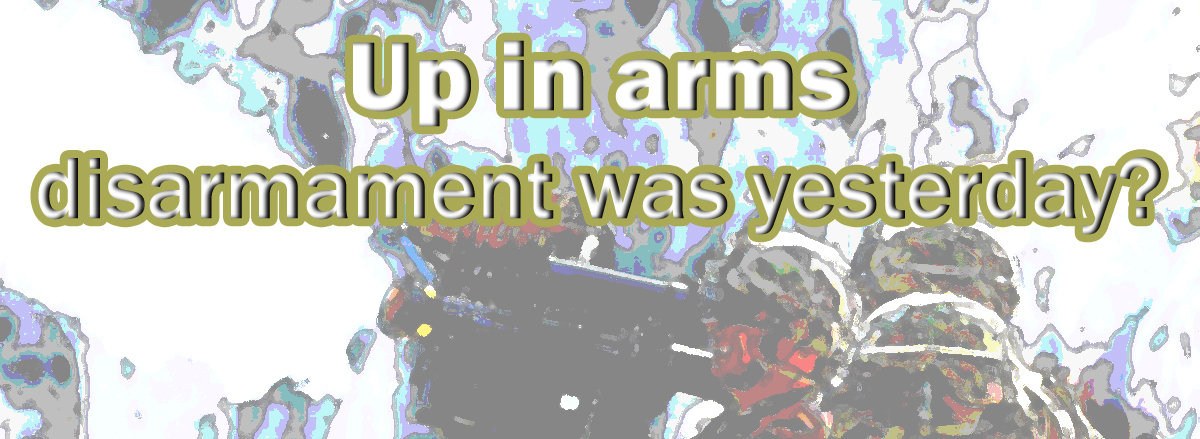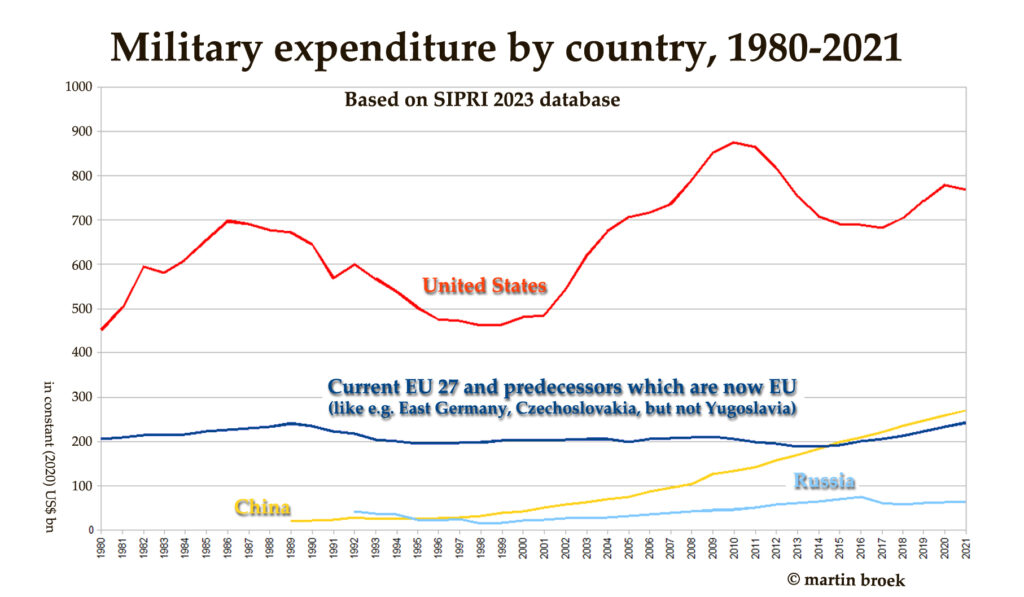
Disarmament was yesterday. That is how the German press describes the career shift of Rolf Mützenich, the SPD parliamentary leader in the Bundestag. Since the Russian invasion of Ukraine the politician, known for his commitment to arms control, sadly has lost many battles. This goes further than German transits of arms to Ukraine. It also includes arms exports to Riyadh, despite the dead of 377,000 Yemenis in a war in which the Saudi’s are a part. Even the German Greens have changed positions on arms sales to Mohammed bin Salman. Domestically Mützenich had to accept acquisition of armed drones by the Bundeswehr. Mützenich worked against the odds for peace and disarmament for two decades, now he has to create parliamentary consent for heavy weapons acquisition and the largest German rearmament since the Cold War.
The German press agency Deutche Welle published an overview of the value of military supplies by European countries to Ukraine in 2022 (until November). The total amount was €27,5 billion. Since then, a number of further decisions is made. In December 2022, Al Jazeera came with an figure of €93,6 billion ($100 bn.) for EU military transfers to Ukraine. Which is less than the total of US$ 110 in the four packets from Washington, but Europe is stepping up its donations too. The Netherlands for example decided to establish a packet of €2.5 billion to support Ukraine in December (for military aid, critical repairs and targeting impunity). The list of (planned) shipments is long. France is set to become the first Western country to deliver tanks to Ukraine. Italy came with more air defence missiles. But the most important change towards the staggering amount of military support to Ukraine came by the last proposal of US lawmakers to donate $45 billion in aid, nearly 20 percent more than the Biden administration had requested.* Investors predict strong performance by the military industry in the coming years. German military company Rheinmetall is already a champion on the stock market and some estimate that the value of the ten largest military companies increased by a staggering $98 billion as a result of the war in Ukraine.
The other effect of the Russian military aggression is the growing military budget of the member states of the European Union since 2014. The European Defence Agency, the EU body to streamline European arms projects, recently published its annual report. EU defence spending surpasses €200 billion for the first time, driven by record defence investments. In 2021 EU defence spending was €214 billion; a 6% increase on 2020 and 7th year in a row of growth. Of these expenditures, the enormous amount of €43 billion will be spend on equipment procurement. Never before was the share of materiel costs so high in the military expenditures (which also covers salaries, maintenace, overhaul, buildings and operational costs like for fuel). It was even slightly higher than the NATO–target of twenty percent. The online publication Breaking Defense concluded in its forsight on 2023 that European defense spending is no longer a ‘laughing matter‘. While Russia is – not without reason – depicted as military weak, it is on the other hand used as major argument to step up military investments and production. NATO’s seceretary general Stoltenberg is calling for a rise in ammo production levels for the stocks of NATO countries themselves and to support Ukraine.

The Peace Dividend, the possibility to reduce military investments because of the end of the Cold War in the late eighties and early nineties, quickly evaporated and turned into a spending hike following the high-tech Gulf War of 1990-91. After that, high defense spending was legitimized by the war on terrorism, with its major military operations in Iraq and Afghanistan. These growing military expenditures came to a halt in the economic crisis of 2007-2008 and kept level until 2014, when Russia annexed the Crimea and NATO re-endorsed its aims of higher military spending at a summit in Wales. While public perception is led to believe in underfunded armed forces, after 2014 military investments where soon at a level as high as the top investments during the Cold War (corrected for inflation). After February 2022, this policy of military investment sailed very strong fair-winds. NATO summarised it like this: “Since Russia’s full-scale attack against Ukraine in February 2022, a majority of Allies have committed to investing more, and more quickly, in defence.” This despite the fact NATO already outspends Russia a number of times (see line diagram). Currently the situation is used to raise the spending even further at the cost of society.**
While the NATO’s military expenditures are back at the level of Cold War investments, what is missing is arms control. In the stalemate between East and West of the past century the warring parties decided to embark on policies of arms control and disarmament. Momentarily it seems Europe focuses almost exclusively on a military answer to the invasion of the Ukraine and the massive supplies of arms are the most visible of this. German scholar Herbert Wolf recently stated the omission of arms control policies and the current military escalation creates a dangerous situation. Control policies should restart, despite the complicated international situation, according to Wolf. So get the diplomats out of the closets. The world needs cooperation to battle the biggest threat of all – not Moscow, not Beijing, but climate change, killing our common future.
Calls for a structural EU arms production increase ignore that the infusion of western arms in Ukraine is an exceptional situation. We are in the middle of a major war and the support to Kyiv is enormous. Comparing the €43 bn. of EU member states annual financial resources spend on domestic procurement to the 110 US + 10 billion plus EU support for the Ukraine military forces (until now) shows how massive this support is. Even more so considering that the most expensive weapon systems, such as fighter aircraft and major naval vessels, are not part of the package.There are limits in ammunition stocks. But if this current extraordinary demand for weaponry did not show shortages that would be peculiar.
The extreme focus on a military approach to security is dangerous in the long term. New capabilities may be hard to create, but it is even harder to reduce them. To develop a structural higher military production capacity – on top of the increases of previous years – for what will be a temporarily disaster, will give arms and the military a more central position in our own societies. That might be good for the armed forces and the military industry, but it is not good for our common global security, which is more helped by diplomacy, arms control and global steps to disarmament.
* The Forum on Arms Trade keeps track of the most of the global transits to Ukraine.
** Read the Stop Wapenhandel/TNI report Smoke Screen of November 2022 for background information.
Martin Broek January 2023
